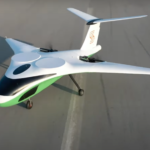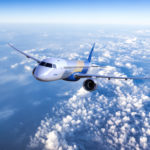FINN editor-in-chief Alan Peaford MBE considers how the industry might evolve over the next 12 months.
January is usually the month when we are filled with a sense of optimism, but 2023 just has that whiff of uncertainty about it that has plagued us for the past three years.
The (hopefully) last knockings of Covid are gradually being silenced as China – the one most likely to spark demand from manufacturers – appears to be on the upward curve as borders finally open.
According to analysts the number of scheduled flights will be pretty well back to 2019 figures as Chinese New Year is celebrated, thanks to a surge in pent-up demand for domestic flights. International departures remain down by 10 per cent on the January 2019 figures – but numerous airlines are re-opening flight schedules in a strong belief that tourism (in both directions) will step up.
Interestingly the A380 – the passengers’ favourite aircraft type – that was written off by a number of carriers before the pandemic, is being brought out of retirement to cope with the demand at the same time some airports internationally are still struggling to manage the numbers.
No going back
Smoothing the way for passengers is one area where we should see more action in 2023. The trend towards increased use of biometrics should step up apace in 2023. The contactless travel that was essential during the Covid travel days proved the case – and there is no going back.
Airports have seen the advantages – and airlines welcome it. Istanbul’s new international airport in collaboration with Turkish Airlines and the Star Alliance is firmly in the testing stage of its Star Alliance Biometrics system while an American Airlines partnership with the TSA has seen mobile identification go to a new level with passengers already approved on the TSA PreCheck can go through the airport with just their face as ID and their phone to open the way.
How do passengers feel? Well according to IATA, some 75 per cent would prefer to use digital ID rather than passports and boarding passes.
Digital revolution
The digital revolution is reaching the end-use in more ways than we imagined four or five years ago when talk about automation, robotics and digital twins was the preserve of the manufacturing side of aerospace.
During 2022, sitting in the lounge at Jeddah’s International Airport a robot waiter rolled by me offering soft drinks and glasses for thirsty travellers. Pittsburgh’s xBridge technology is another to aid retail sales and customer interaction with technology.
We also saw examples of robotics working below ground at Heathrow Airport where a Boston Dynamics robot dog named ‘Dave’ played a vital part in the refurbishment of a 1960s cargo tunnel. The robot features a Trimble X7 scanner to provide 3D laser scans of the site reaching and identifying parts that would be difficult for humans. The success of this suggests that other developments will be looking for robotic and AI support.
It cannot come soon enough. The industry is being hit by a skills and people shortage that spreads right through the supply chain. People who were let go at the start of the pandemic are not returning; shortages of instructors are hampering recruitment of new people. Distribution of parts has also slowed.
Supply shortages
For aviation that is leading to a shortage in the supply of commercial aircraft needed to meet the demand of recovery. A shortage of MRO facilities – and engineers within – and a drop in manufacturing numbers is at the heart of this.
Earlier this month, leasing company Avolon published its outlook for 2023 and blamed the lack of aircraft on the “deadweight loss” of some 1,700 single-aisle and 700 twin-aisle aircraft “that had been planned but were not built” due to the Boeing 737 Max grounding and then the pandemic, which is combining with the supply-chain difficulties and worker shortages faced by airframers today as they attempt to ramp up production.
Ryanair’s Michael O’Leary confirms “there are not a lot of spare aircraft out there” and said the consequence is higher prices. There are fewer jets in service in Europe than there were in 2019.
From the manufacturing perspective, both Airbus and Boeing’s production numbers were lower than planned and analysts suggest that the targets will not be met for at least another year.
Airline passengers hoping that the more recent increase in air fares may start to slide will be disappointed. With fuel prices high along with some fuel shortage hot spots the cost of operation is remaining high – and that is before the airlines deal with that other valuable commodity, crew.
A number of airlines are currently on global roadshows to encourage applications to join the ranks of flight attendants. Meanwhile there is growing concern about pilot training.
Future workforce
Airlines have realised that while the current challenges from the lack of aircraft along with still being at roughly 90 per cent of pre-covid demand, they are just about coping. But when they look to the future the pool for potential cadets to come through the system to take the right-hand-seat is dwindling. A big barrier for new joiners is the cost.
Getting a commercial licence and a type rating for one of the most popular airline types (The Boeing 737 MAX and the Airbus A320 family) will cost in the region of $130,000 – usually funded by a loan or the bank of mum and dad. Once flying an airline will hold a “bond” sometimes as much of $30,000 to tie the new pilot to the airline. Hardly an attractive proposition.
But according to Maximilian Buerger, managing director of AFM.aero, the market intelligence platform and advisory company, at a January flight training industry seminar, things could be changing.
Airlines hiring
The airlines have re-hired as many experienced pilots that were laid off during the pandemic that they can and pushed through those that were already in independent academies as training started. But these are not enough. Many airlines are returning to creating their own cadet programmes – which has led to a surge in the “poaching” of qualified instructors.
“Airlines are coming back to cadet programmes which are not self-funded programmes anymore,” he said. They are either fully funded, or partially funded. “We think that we’re going to see an increasing model or trend, which will be very similar to the airBaltic programme, where within an airline cadet programme, applicants or individuals might be funding the PPL stage of the pilot training, with the rest of it will be financed by the airline.”
But this all takes time.
Eurowings chief operating officer, Edi Wolfensberger, has warned there’s a big risk of the availability of new pilots in 2024, due directly to the lack of pilots enrolling to pilot training in 2020, 2021 and early 2022.
Buerger confirmed this. “We feel 2024 is going to be a really interesting year in terms of kind of this misbalance of demand and supply,” he said. A further challenge will be the lack of simulator capacity.
Stand by for a large increase in the number of academies both independent and airline-run … and watch out for increased costs in simulator time and new sims.
Sustainability and advanced aircraft
When we look at trends for the next 12 months, we cannot avoid those twins – sustainability and advanced aircraft.
Urban and advanced aircraft are pushing on. It is my belief we will see more practical targets – think healthcare and cargo. During the pandemic we saw unmanned delivery drones dropping at hospitals and medical centres and by so doing proved their capabilities albeit through empty skies.
These “practical” applications will make a better case for investment in the technology and help deliver one key development in the shape of improved battery technology making longer flights of over 100 miles more practical and sustainable.
Some 40 per cent of private equity and venture capital professionals believe battery technology will evolve enough over the next two years to make this achievable, and 29 per cent believe this will be the case by 2025.
On a sustainable front, already this year we have seen progression in the search for a hydrogen solution to air power. More aircraft types will deliver hydrogen flight during this year and Airbus with its A380 hydrogen engine test bed, and companies like Rolls-Royce and MTU, will be pushing engine development further.
As these trends start to pull together to a common goal, surely as we end 2023, it will be with even greater optimism about the future of flight.
Subscribe to the FINN weekly newsletter

